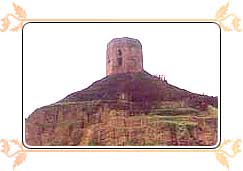Situated 10 km from Varanasi is the site where Buddha delivered his first sermon to his five disciples, preaching the middle path for attaining 'Nirvana'. Realising the sanctity of the site, emperor Ashoka, in the 3rd century B.C. built Sarnath temple here.
 Sarnath Tourism - A Sneak Peek Into Past
Sarnath Tourism - A Sneak Peek Into PastSet in well maintained gardens Sarnath's ruins are a pleasant place to stroll amongst or meditate in. The main things to see are Asokan Sarnath pillar also called Sarnath pillar, Sarnath stupa, the ruins of the Mulagandhakuti and the huge Dharmek Stupa. Further to the east is the modern Mulagandhakuti Vihara with its beautiful wall paintings and behind it the Deer Park. The Sarnath Museum houses some of the greatest treasures of Indian Buddhist art and should not be missed. Asoka's lion (or Sarnath lion) capital and the beautiful Teaching Buddha (a popular Sarnath buddha statue) are amongst the most beautiful sculptures ever made.
Sarnath History
The earliest remains here at Sarnath Uttar Pradesh are from the Mauryan period ascribed to Emperor Ashoka the great. The Lion Capital is the national emblem of India. The Dharmarajika Stupa was built by Ashoka, and it was expanded and enlarged several times upto the 12th century BC. The structures here were destroyed by repeated invasions - and by gradual neglect - and what are seen today are the results of repeated reconstruction efforts. The Dhamekh stupa is a cylindrical tower, 143 feet high, and 93 feet high. The stones in each layer were bound together by iron clamps. This tower dates back to the Gupta period. The Chinese traveller Hsuen Tsang who visited India in the 7th century CE, speaks of the glory of Sarnath and of the structures that existed then.
 Raised
by Mughal Emperor Akbar in 1555 A.D., it is believed to be the place
where Buddha met his five disciples. The majestic Ashoka pillar
records visit of emperor Ashoka to Sarnath. It was originally
adorned by a capital of four lions, now housed in the Sarnath
museum. The capital became the state emblem of modern India.
Raised
by Mughal Emperor Akbar in 1555 A.D., it is believed to be the place
where Buddha met his five disciples. The majestic Ashoka pillar
records visit of emperor Ashoka to Sarnath. It was originally
adorned by a capital of four lions, now housed in the Sarnath
museum. The capital became the state emblem of modern India.